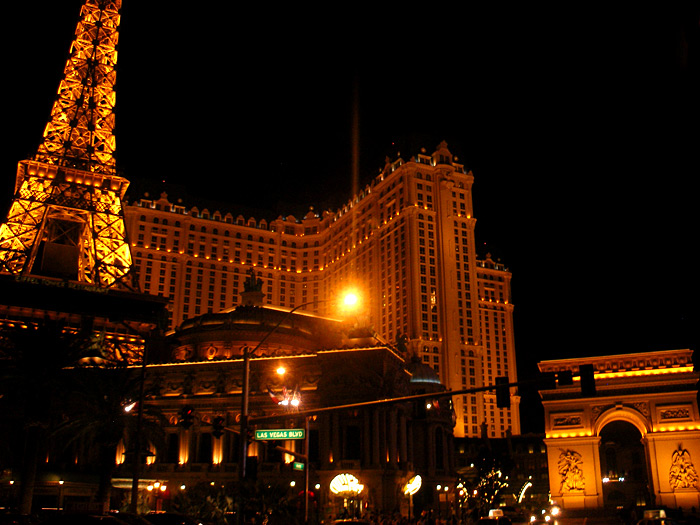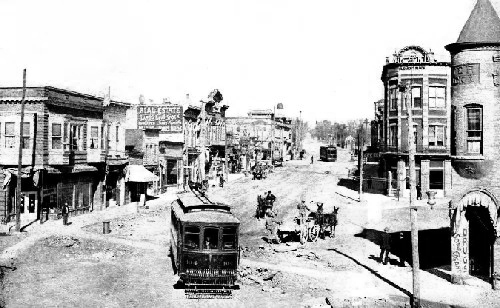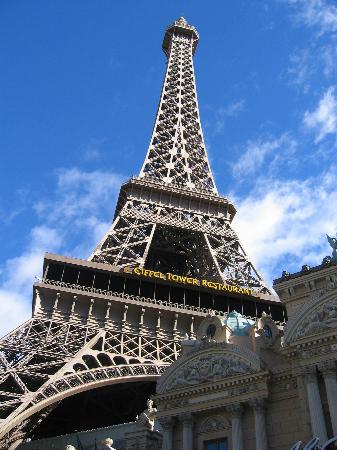Las Vegas (often informally abbreviated to "Vegas") is the most populous city in the state of Nevada, United States, and a major vacation, shopping, entertainment, and gambling destination. It was established in 1905 and officially became a city in 1911. It is the largest U.S. city founded in the 20th century.
The name Las Vegas is often applied to the unincorporated areas of Clark County that surround the city, especially the resort areas on and near the Las Vegas Strip. This 4½ mi (7.2 km) stretch of Las Vegas Boulevard is mostly outside the Las Vegas city limits, in the unincorporated town of Paradise.
The center of gambling in the United States, Las Vegas is marketed as The Entertainment Capital of the World, also commonly known as Sin City, due to the popularity of legalized gambling, availability of alcoholic beverages at any time (as is true throughout Nevada), and various forms and degrees of adult entertainment. The city's glamorous image has made it a popular setting for films and television programs.
Las Vegas (English: "The Meadows" or "The Grasslands") was given its name by Spaniards in the Antonio Armijo party, who used the water in the area while heading north and west along the Old Spanish Trail from Texas. In the 1800s, areas of the Las Vegas Valley contained artesian wells that supported extensive green areas or Meadows (Vega in Spanish), hence the name Las Vegas. John C. Frémont traveled into the Las Vegas Valley on May 3, 1844, while it was still part of Mexico. He was a leader of a group of scientists, scouts and observers for the United States Army Corps of Engineers. On May 10, 1855, following annexation by the United States, Brigham Young assigned 30 Mormon missionaries led by William Bringhurst to the area to convert the Paiute Indian population. A fort was built near the current downtown area, serving as a stopover for travelers along the "Mormon Corridor" between Salt Lake and the briefly thriving Mormon colony at San Bernardino, California. Las Vegas was established as a railroad town on May 15, 1905, when 110 acres (44.5 ha) owned by Montana Senator William A. Clark's San Pedro, Los Angeles and Salt Lake City Railroad, was auctioned off in what is now downtown Las Vegas. Las Vegas was part of Lincoln County until 1909 when it became part of the newly established Clark County. Las Vegas became an incorporated city on March 16, 1911 when it adopted its first charter.
Las Vegas is one of the most dynamic cities in the world, "reinventing" itself as a gambling mecca, family destination, capital of hedonism ("What happens in Vegas stays in Vegas"), or hotspot for dining and shopping over the years. Several events stand out as turning points:
The name Las Vegas is often applied to the unincorporated areas of Clark County that surround the city, especially the resort areas on and near the Las Vegas Strip. This 4½ mi (7.2 km) stretch of Las Vegas Boulevard is mostly outside the Las Vegas city limits, in the unincorporated town of Paradise.
The center of gambling in the United States, Las Vegas is marketed as The Entertainment Capital of the World, also commonly known as Sin City, due to the popularity of legalized gambling, availability of alcoholic beverages at any time (as is true throughout Nevada), and various forms and degrees of adult entertainment. The city's glamorous image has made it a popular setting for films and television programs.
Las Vegas (English: "The Meadows" or "The Grasslands") was given its name by Spaniards in the Antonio Armijo party, who used the water in the area while heading north and west along the Old Spanish Trail from Texas. In the 1800s, areas of the Las Vegas Valley contained artesian wells that supported extensive green areas or Meadows (Vega in Spanish), hence the name Las Vegas. John C. Frémont traveled into the Las Vegas Valley on May 3, 1844, while it was still part of Mexico. He was a leader of a group of scientists, scouts and observers for the United States Army Corps of Engineers. On May 10, 1855, following annexation by the United States, Brigham Young assigned 30 Mormon missionaries led by William Bringhurst to the area to convert the Paiute Indian population. A fort was built near the current downtown area, serving as a stopover for travelers along the "Mormon Corridor" between Salt Lake and the briefly thriving Mormon colony at San Bernardino, California. Las Vegas was established as a railroad town on May 15, 1905, when 110 acres (44.5 ha) owned by Montana Senator William A. Clark's San Pedro, Los Angeles and Salt Lake City Railroad, was auctioned off in what is now downtown Las Vegas. Las Vegas was part of Lincoln County until 1909 when it became part of the newly established Clark County. Las Vegas became an incorporated city on March 16, 1911 when it adopted its first charter.
Las Vegas is one of the most dynamic cities in the world, "reinventing" itself as a gambling mecca, family destination, capital of hedonism ("What happens in Vegas stays in Vegas"), or hotspot for dining and shopping over the years. Several events stand out as turning points:
- The floods of 1955, 1984, 1999, and 2003.
- Establishment of Las Vegas as a railroad town (May 15, 1905).
- Legalization of gambling (March 19, 1931).
- Completion of Hoover Dam (October 9, 1936).
- Opening of Bugsy Siegel's Flamingo Hotel on what would become the Las Vegas Strip (December 26, 1946).
- The first Strip property "The El Rancho" was consumed by fire on July 17, 1960.
- Atmospheric nuclear testing (1951 to 1962).
- Elvis Presley returns to live performances in August 31, 1969 by opening the International Hotel MGM Grand Hotel fire the worst disaster in Nevada history on (November 21, 1980).
- Opening of the Mirage which began the era of megaresort casinos on (November 22, 1989).
- The Dunes became the first Strip property to be imploded on October 27, 1993.
- 100th birthday, or Centennial, of Las Vegas (May 15, 2005).
Las Vegas' climate is typical of the Mojave Desert, in which it is located, marked with hot summers, mild winters, abundant sunshine year-round, and very little rainfall. High temperatures in the 90s °F are common in the months of May, June, and September and temperatures normally exceed 100 °F (38 °C) most days in the months of July and August, with very low humidity, frequently under 10%. The hottest temperature ever recorded is 117 °F (47 °C) set twice, on July 19, 2005, at McCarran International Airport and July 24, 1942, at present-day Nellis Air Force Base. Winters are cool and windy, with the majority of Las Vegas' annual 4.49 in (114 mm) of rainfall coming from January to March. Winter daytime highs are normally around 60 °F (16 °C) and winter nighttime lows are usually around 40 °F (4 °C). The coldest temperature ever recorded is 8 °F (-13 °C) set on January 25, 1937, at present-day Nellis Air Force Base. Showers occur less frequently in the Spring or Autumn. July through September, the Mexican Monsoon often brings enough moisture from the Gulf of California across Mexico and into the southwest to cause afternoon and evening thunderstorms. Although winter snow is usually visible from December to May on the mountains surrounding Las Vegas, it rarely snows in the city itself.






















 9:00 AM
9:00 AM
 crkota
crkota






 Posted in:
Posted in: 

0 comments:
Post a Comment